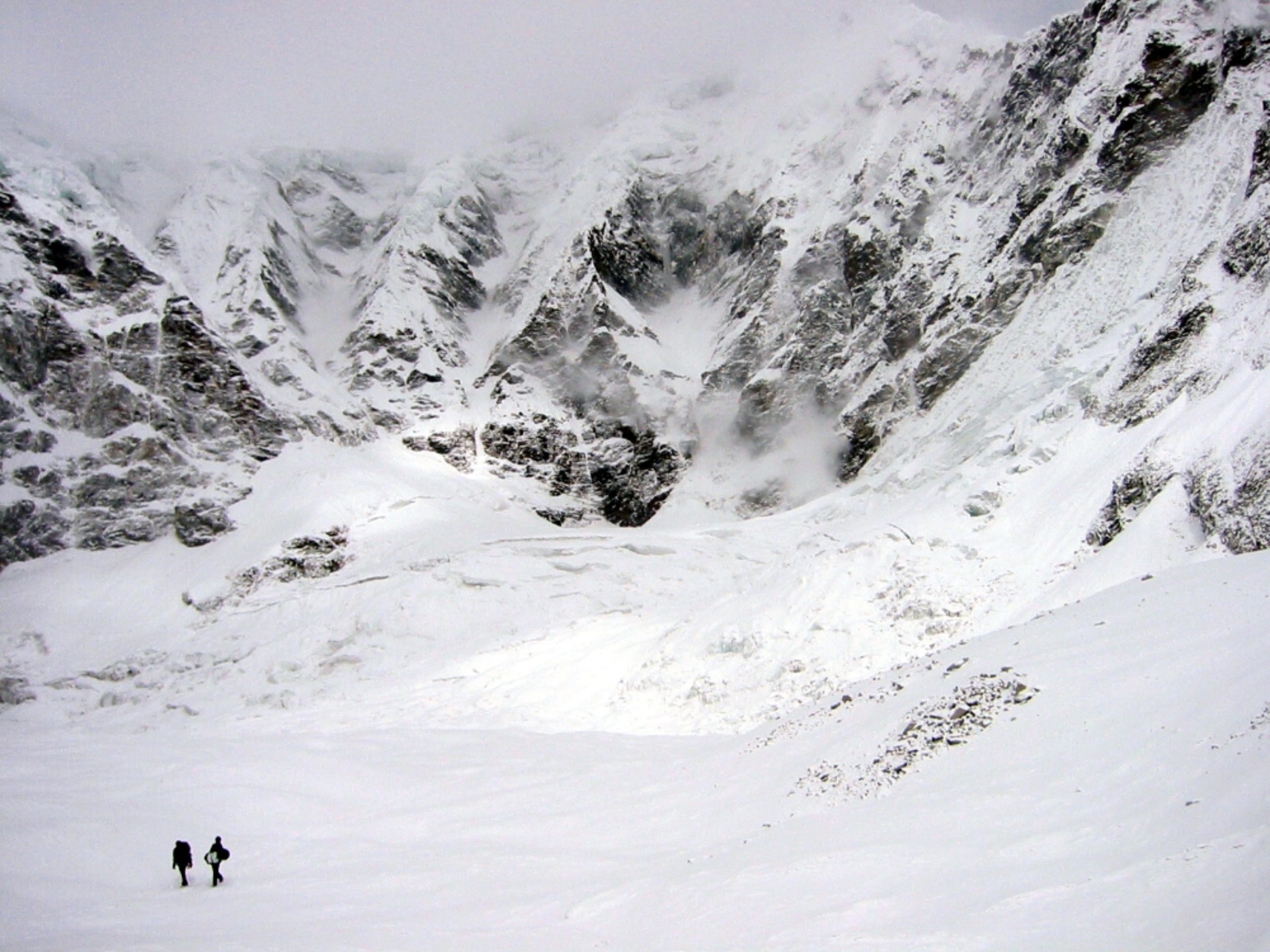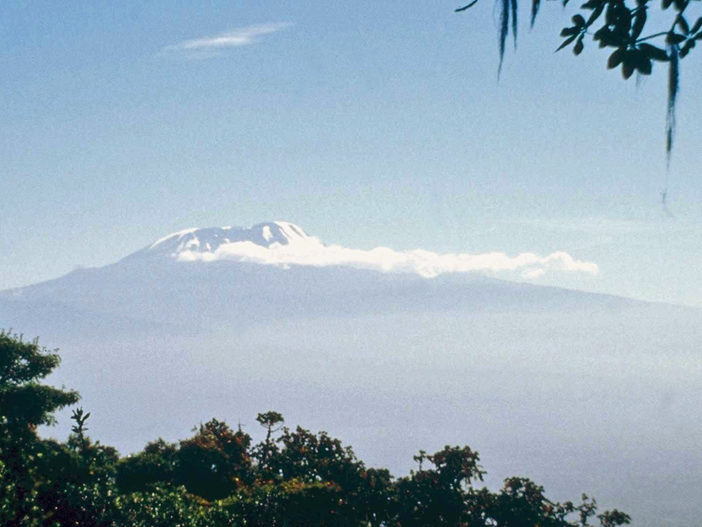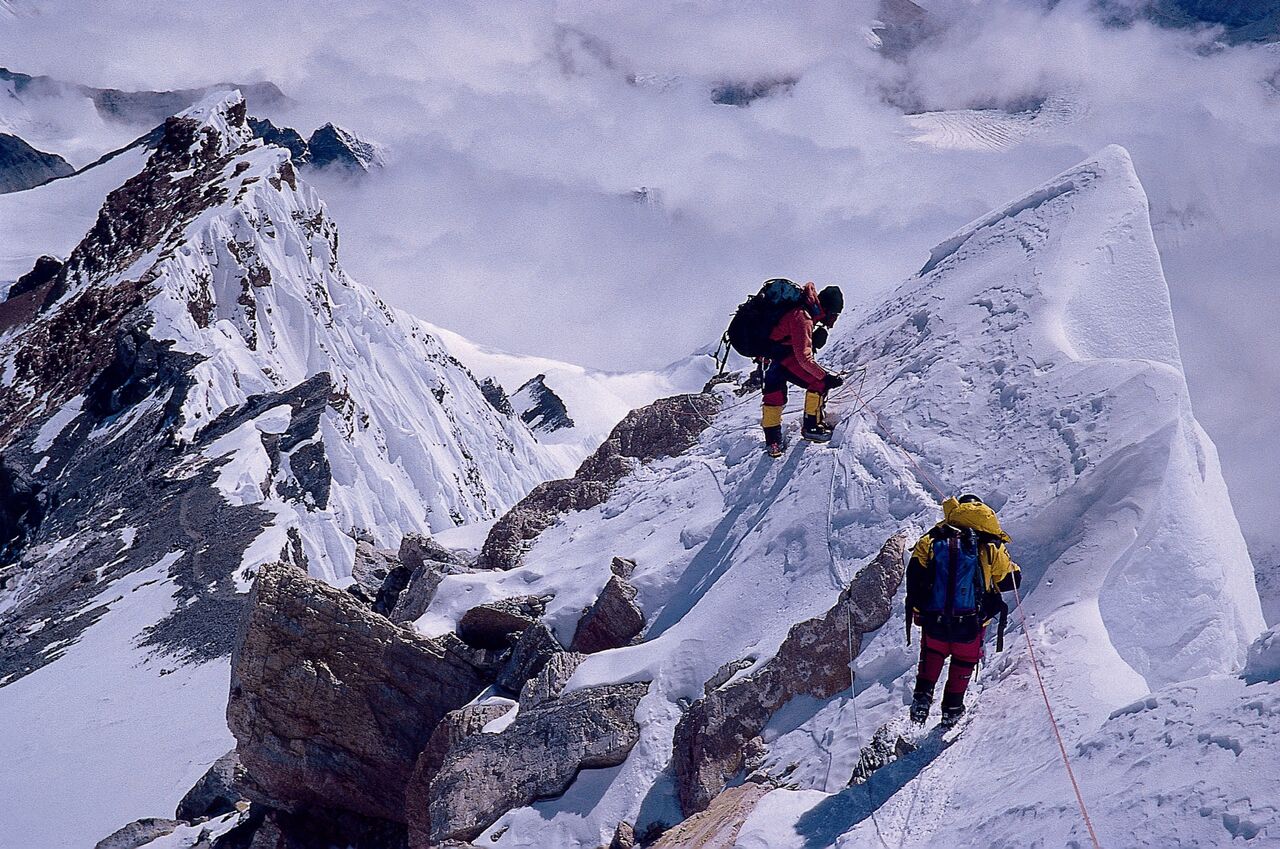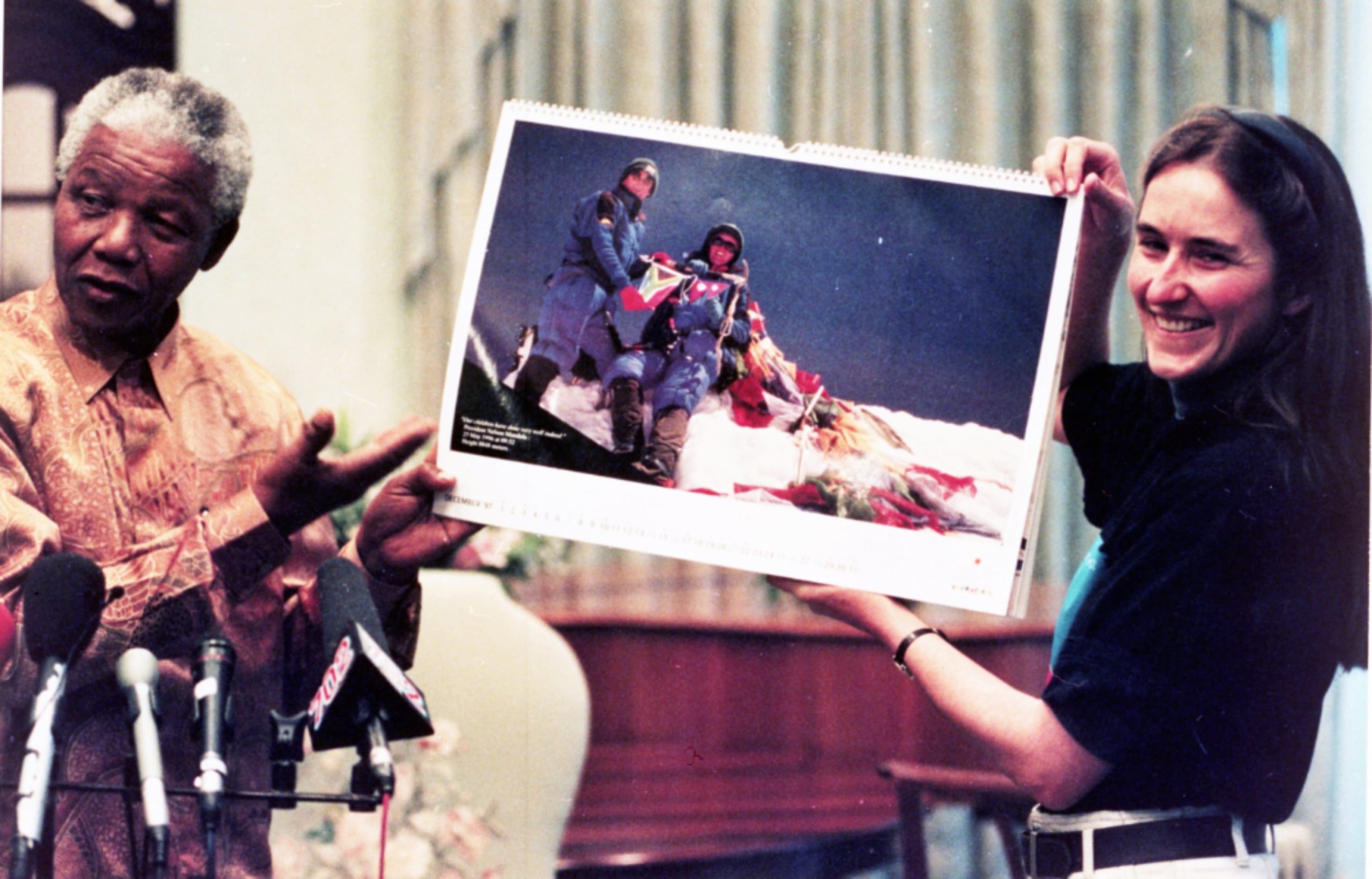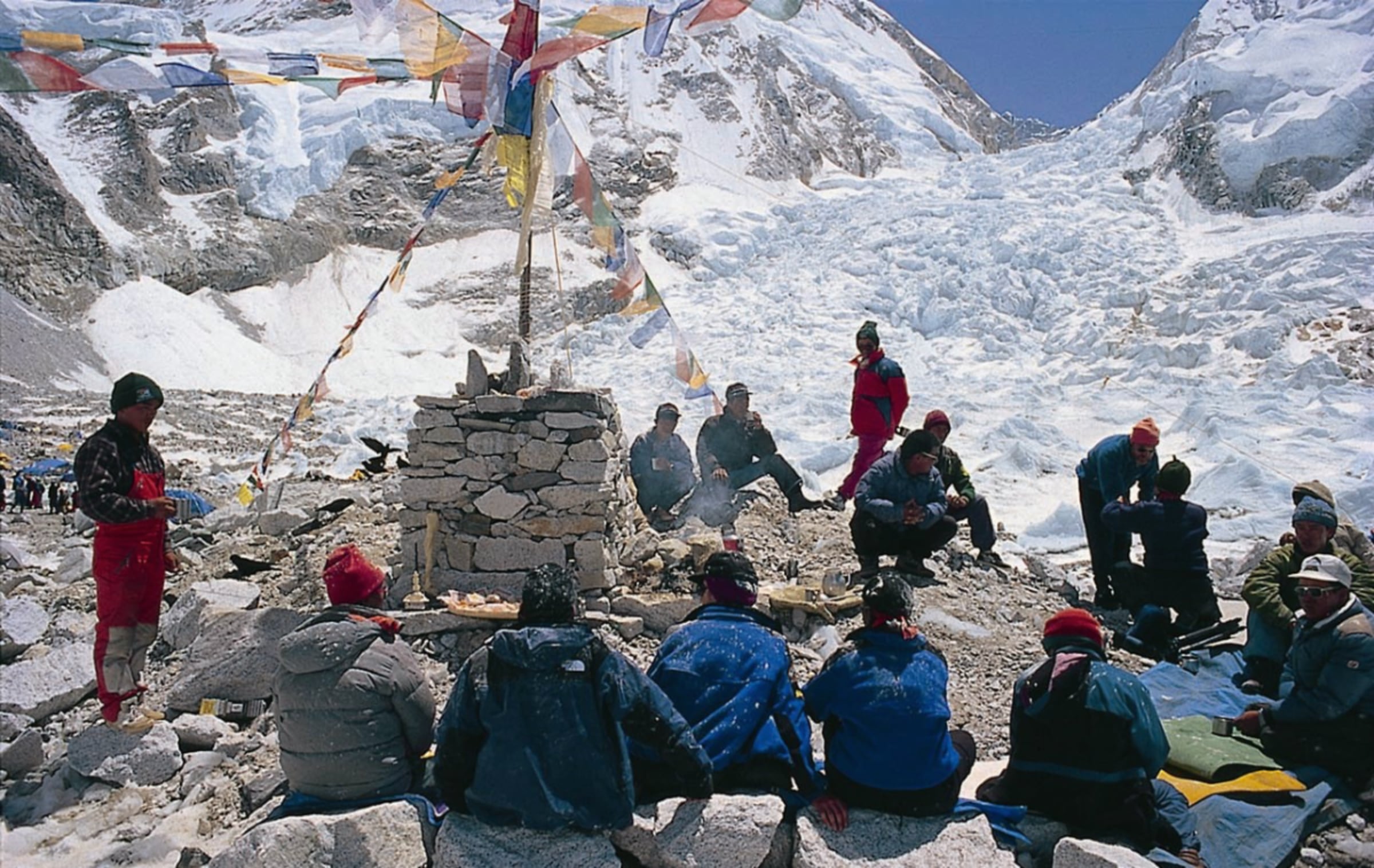THE EXPEDITION REPORT
The dream: to attempt of new route on the world’s highest mountain in the 50th year of its first ascent.
Our team of four, Ian Woodall, Cathy O’Dowd, Ang Geljen Sherpa and Padam Magar, left Kathmandu on Sunday 6 April 2003, to begin the journey to the foot of the east face of Everest. We were joined at the Tibetan border by our liaison officer, Dawa. Three long days of driving across the Tibetan plateau brought us to the village of Kharta, where the vehicles left us, Dawa settled in for a six week wait, and the expedition equipment was loaded onto the backs of yaks.
The first obstacle in what was to be a stressful expedition became apparent with news that both passes into the Kangshung valley were potentially blocked by snow. After two days of walking, we were at the foot of the Langma La, a 5000 metre high pass. We were keen to push on, but with reluctant yak herders worried about the depth of snow, and eager to go home, a stalemate was soon reached.
After much persuasion, everyone began to break up trail up through the snow towards the pass, creating a path that the yaks could walk through. It took two days to cross the pass, with the lead yaks sometimes sinking in up to their bellies, and each leg having to be dug out individually. After the initial hesitation, the yak herders worked like Trojans, often carrying the loads themselves, rather than tax their yaks.
The crossing of the Langma La brought us our first sight of the east side of Mount Everest, part of a magnificent mountain panorama encompassing Everest, Lhotse, Makalu and Jomolonzo. Where dozens of teams and hundreds of climbers were crowding into the south and north base camps, our tiny team of four would have the entire Kangshung valley to ourselves.
Two more days of walking brought us to the site of base camp, pitched in the last grassy field on the edge of the Kangshung glacier, before the foot of Everest. There the yak herders left us, booked to return six weeks later. During that entire time we would not see another living soul.
The situation of base camp is stunning, with the east face of Everest, and the north-east face of Lhotse forming a semi-circle of snow and ice wall rising up for nearly two vertical miles. A long line of peaks runs away to the left, with Makalu and Jomolonzo dominating the skyline. The Kangshung glacier runs along the northern side of base camp, with the moraine slopes of Khartse rising up on the south.
We set up a base camp, with a large tent, the Aztec Palacio, becoming the centre of our world. There we cooked, ate, stored equipment, ran our communications and passed away the idle hours. Five smaller tents were set up, for sleeping quarters, further equipment storage, and the toilet. Water was obtained from an ice lake down on the glacier.
A smaller tent within the Palacio protected the crucially important technical equipment – an Iridium Motorola satellite phone and Sony laptop which provided email and telephone communications with the greater world. Power for the comms came from a petrol generator.
Email reports and digital pictures were compiled by Cathy and sent to three websites, in the UK, Ireland and Germany, and to two business intranet sites.
However the Iridium provided frustrating to use, with the high mountain walls reducing the satellite coverage. Every few minutes of comms would be followed by a two minute dead spell. This proved particularly challenging for the communications with TalkSport Radio in London, and finally the crossings were recorded in advance, rather than live, so as to edit out the dropped calls.
The first few days were spent setting up tents, sorting through equipment, trying to get the comms to work, and acclimatising to the altitude – base camp being at a height of 5300 metres, with only half the oxygen of sea level available.
Moving towards the mountain slopes could only commence once the puja had been done – the Tibetan Buddhist ceremony that asks for safe passage on Chomolungma (mother goddess of the earth). A small altar was built and a fire of juniper branches lit. Prayer flags were strung across the altar to the various tents, and offering of sweets and beer laid out for the goddess.
The expedition was hampered from the start by Ian’s poor health, first with a raging tooth abscess, and then with a severe chest infection. Nevertheless, an advanced base camp (ABC) site had to be found. Following a recce to the foot of the American Buttress by Cathy and Ang Geljen, and a day sorting ABC loads, the process of carrying from base camp to an ABC dump near the foot of the planned route began.
A reasonably straightforward route across the four kilometres of glacial rubble was eventually found. The glacier provided a magnificent contrast of giant boulder fields, vast ice walls, and, as temperatures rose, ever larger iced lakes. The glacier was constantly shifting and the sound of its creaks and groans, and frequent rock slides, filled the air day and night.
Once enough kit had been dumped for a first attempt on the climb, we took a few days to do acclimatising ascents of neighbouring peaks, culminating with an attempt on the 6,500 metre high Khartse. However, bad weather set in and we finally turned back at 6,300 metres, in the face of high winds and steadily increasing snowfall. This was the beginning of an ever more frustrating pattern of poor weather, with high winds and regular snowfall.
We had also used the acclimatising ascents as recces to look at different angles of the east face, and to watch the avalanche patterns. What we were seeing was discouraging. Hanging seracs threatened far more of the face than we had anticipated. It was becoming clear that the route we had intended to try – the central buttress – was too dangerous. Giant seracs menaced it from both sides, and on one day we watched with horror as a giant avalanche swept across the entire bottom third of the buttress.
After three days trapped at base camp by poor weather, we finally set up ABC on 1 May, and moved in the next day. Problems were multiplying. Ian’s chest infection was still lingering, and he was slow. Cathy’s back was beginning to take strain under the heavy load carrying. Ang Geljen was immensely strong and cheerful, but could not manage everything alone.
ABC was pitched on a moraine pile that seemed safe from the avalanches that swept down from the north-east face of Lhotse, swept down from the Big Al serac of the Anglo-American route, and swept down from both sides of the American Buttress. We then tried to find an alternative, and safer, line to climb. We finally decided to try to get onto the Fantasy Ridge, a convoluted snow ridge sweeping down from just north of the Pinnacles. Although the Fantasy Ridge has been attempted before, it has never been climbed.
A ramp of snow appeared to offer a route up onto the ridge. Cathy and Ang Geljen pushed their way up this, with Ian carrying equipment behind them in support. However, we found conditions to be very poor. The snow was knee deep or more, and soft like sugar, so that the trail would not pack down, nor would snow stakes hold. Beneath the sugar snow was hard ice. Above the ramp was a line of threatening seracs. After a day of good weather, that night in ABC was particularly windy. The following morning it was snowing and we stayed put in ABC.
That evening Padam at base camp managed to get through at the 18.00 radio call. However, although he could be heard at ABC, he could not hear their reply. He was transmitting a message of despair into the ether: ‘base camp destroyed, come back, come back!’
By then it was close to dark, with mist covering the glacier. The climbers spent that night at ABC, planning to leave early the next morning for base camp. That evening, around 20.00, ABC was hit by avalanche blast. What felt like vast barrels of air came rolling across the tents, pressing them down into the snow, and everything filled with spindrift. In pitch darkness, lying in their sleeping bags, the climbers could only wait and hope that there would be no ice blocks following the spindrift.
An avalanche engulfs the climb’s lower section. The attempted route starts in the centre of the picture and climbs diagonally up and right.
Fortunately there was no damage to ABC, apart from a lot of spindrift to shake out. However, base camp had not been so lucky. The climbers arrived back early the next day to discover that three of the six tents had been completely destroyed, and a fourth – the big mess tent – had been ripped open, with poles bent or broken.
It had been a very frightening experience for Padam, who had been sleeping in one of the tents that was destroyed, and had gone rolling across the field inside the tent in the middle of the night. Equipment has been strewn right across the area, and the team were still finding the odd razor or sock behind distant boulders weeks later. The team would only find out much later that these same winds had destroyed over 60 tents on Everest, Cho Oyu and Shishapangma.
The first priority had was to attempt to repair the big Palacio tent, which was done with a combination of rope and duct tape. Equipment was packed around the sides to hold it down, and a crawl hole established for the entrance. Although it was never the same again, it was rendered usable for the remainder of the trip, and there is no doubt that without it base camp would have been a much less pleasant place.
Thereafter the job became to find, sort and check equipment. Once the confusion was brought under control it became clear that very little had been lost or damaged. The worst loss was to be the comms, which had all gone crashing to the ground. Although the laptop initially worked, it died a few days later, meaning an end to all email and digital pictures. Our technical base camp in St. Albans, UK, came to the rescue, recording voice reports via the satellite phone, and transcribing those for the websites.
Further drama followed with Padam going down with a bad chest infection, undoubtedly exacerbated by the strain of events. For a tense twelve hours it looked as if he might have to be evacuated while he could still walk. With Kharta a minimum of five days walk away, on the other side of a 5000 metre pass, evacuation was never going to be an easy option. Fortunately the drugs then began to take affect, and Padam slowly recovered.
In the midst of all this bad weather had been depositing fresh snow on the route.
Finally Ian and Ang Geljen headed back to the route, Cathy remaining at base camp to try and rest her back. The climbers were already discouraged by the poor conditions. The treacherous conditions needed fixed safety line, but our equipment lent towards snow stakes and dead men rather than ice screws. With the snow too soft to hold, it was becoming clear that we did not have enough of the right kind of equipment to fix the treacherous slopes.
However, everything was to come to a dramatic climax on this day, 11 May. The small crevasses that had crossed the route had widened dramatically with the rising temperatures. While most were visible, some smaller ones were covered with the fresh snow. Ian and Ang Geljen were battling upwards through the soft snow, when Ang Geljen suddenly vanished. He had fallen into an unseen crevasse, managing to catch himself with arms in crucifix position across the crevasse walls. He hauled himself out, severely shaken, and he and Ian peered down into a bottomless crevasse.
Ang Geljen moved on in front, disappearing over a small rise. Ian, who had been climbing strongly and believed himself fully recovered from his chest infection, suddenly felt his arms seize up and his chest cave in. As he felt himself passing out he managed to call for Ang Geljen, who luckily heard him and came running back.
When Ian came round he found Ang Geljen pumping his chest and massaging his diaphragm to keep his breathing going. With Ian barely strong enough to stand on his feet, Ang Geljen slowly helped him back down the route to the glacier. With the drop in altitude, Ian gradually recovered and was finally able to make his way back to base camp by that evening. He slept on oxygen that night, and although there was no further sign of trauma, he was to remain short of breath and easily tired for weeks afterwards. (However, now, a month after the expedition has returned to Europe, there is no sign of any permanent damage.)
At this point we all felt that the expedition had used up eight of its nine lives, and it was time to call it quits while we were all still in one piece. It had become clear that, even with all three climbers at full strength, we did not have the manpower to climb, and safely protect, the treacherous challenges of the Fantasy Ridge.
Five days of wind and fresh snowfall followed, before the climbers were able to return to the route to clear the equipment off the mountain back to base camp. The now gaping crevasses on the route left even Ang Geljen shaken. Several heavy carries followed to bring the equipment from ABC back across the glacier to base camp.
And then a long wait followed. With the Everest east base camp so remote, there was no way to organise early departure by yak and vehicle. Endless days at base camp followed with Ian playing his computer chess, Cathy learning Spanish grammar, and many games of cards being played. A fortune in matchsticks was lost and won. The team watched as spring finally arrived in the Kangshung valley, with the Himalayan voles coming out of hiding, new species of birds arriving at base camp each morning, and a family of Himalayan marmots bringing out their young to sunbathe close to the expedition tents.
The yak men finally arrived on 26 May, to a rapturous welcome, and two days later the team moved out from base camp. All expedition equipment was burnt, buried or taken out, as well as a considerable amount of the garbage left by the Indian expedition of the previous year. Four days walking brought us to Kharta, and the next day we were driving across Tibet, reaching Kathmandu on 3 June.
All the us are disappointed not to have more progress on the route, but given the ill health and poor conditions that we encountered on the climb, we feel that getting everyone back home in one piece is a success. Our thanks go to all the sponsors who helped us to get as far as we did, and to the various members of the public and the media who supported our endeavour.
We could not have done it without you all!
July 2003


